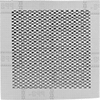Filter by
Container Type
For Use On
For Joining
Maximum Temperature
Width
For Use With
Container Size
Thickness
Manufacturer
Formulation
Reaches Full Strength
Begins to Harden
Minimum Temperature
Clarity
DFARS Specialty Metals
Sealing
Facility and Grounds Maintenance

Drywall Compound Hawks
Carry drywall compound in one hand so you can apply it with the other
1 product
Fastening and Joining
Fabricating and Machining
Containers, Storage, and Furniture
































































